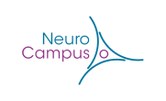Han Lu: Synaptic plasticity in tDCS and optogenetic stimulation
Abstract
We started with transcranial direct current stimulation (tDCS). tDCS is a variant of non-invasive neuromodulation, which promises treatment for diseases like major depressive disorder or chronic pain for patients resistant to conventional therapies. In experiments, long lasting after-effects were observed, suggesting that plastic changes were induced. The exact mechanism underlying the emergence and maintenance of these after-effects, however, remains elusive. Here we propose a model to explain how transcranial stimulation triggers a homeostatic response of the network involving growth and decay of synapses. In our model, the cortical tissue underneath the electrodes is conceived as a recurrent network of excitatory and inhibitory neurons, in which excitatory-to-excitatory synapses are subject to structural plasticity.
Various aspects of stimulation were tested systematically via numerical simulations of such networks, including size and montage of the electrode, as well as intensity and duration of the stimulation. Our results suggest that due to homeostatic process, stimulation generally perturbs the homeostatic equilibrium and leads to stimulated population cut off the excitatory synapses with the unstimulated population but form synapses with each other to form cell assembly. Among all the parameter conditions, strong focal stimulation, for example, enhances the connectivity of new cell assemblies by increasing the rate of synaptic remodeling. Repetitive stimulation with well-chosen duty cycles increases the impact of stimulation as well.
The long-term goal of our work is to optimize the impact of tDCS in clinical applications.
Then we examined the structural plastic changes in an optogentic stimulation induced depression mouse model. We observed changed expression of pre- and post- synaptic proteins.










